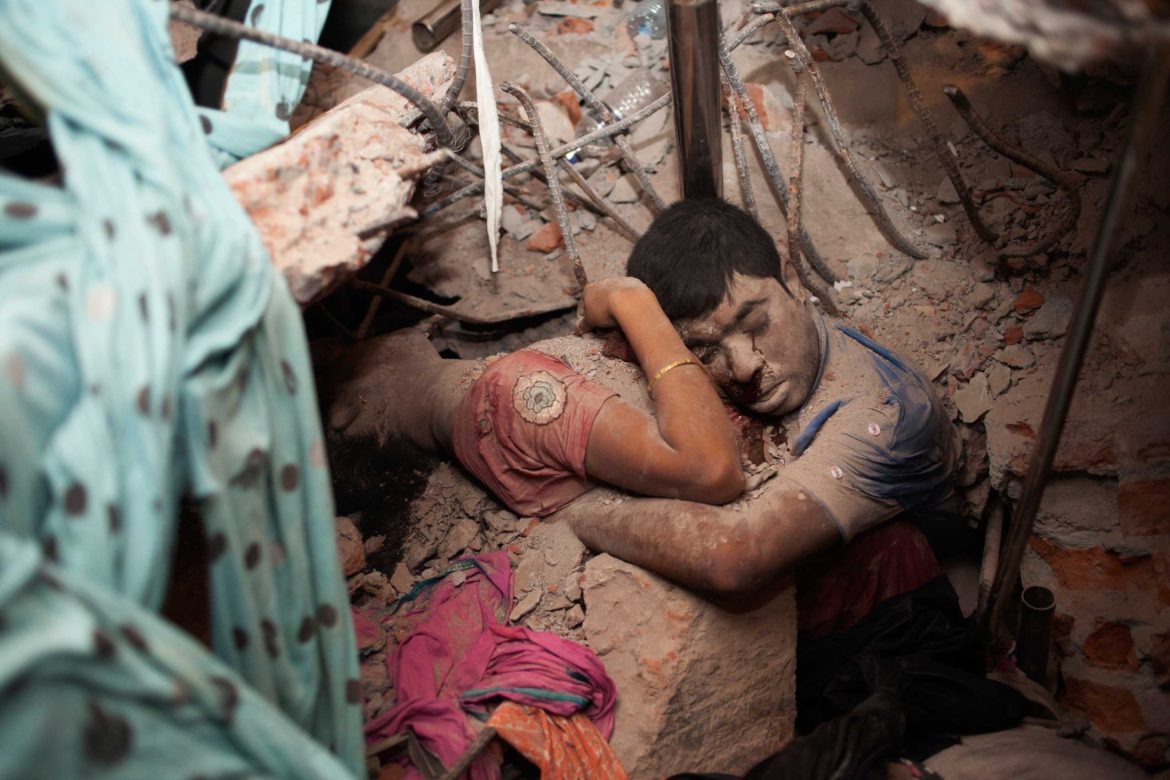On the official website of the Department of Homeland Security of the United States of America, the concept of violent extremism is defined as follows: “individuals who support or commit ideologically-motivated violence to further political goals”[1]. These actions of violence are committed by: “groups and individuals inspired by a range of personal, religious, political, or other ideological beliefs”[2]. For its part, the Department of Public Safety Canada explains: “violent extremism […] refers to the process of taking radical views and putting them into violent action. […] it becomes a threat to national security when […] residents or groups promote or engage in violence as a means of furthering their radical political, ideological or religious views”[3].

When extreme violence goes out of common places
Today, the language is degraded. Most of our contemporaries fall – not always voluntarily – in common places and platitudes strengthening the one-track thinking. This diversion of language makes it easier to keep the attention of the masses on some social issues. An example illustrated by the concept of violent extremism.
Moreover, the Attorney General’s Department of the Australian Government shares this view: “violent extremism is the beliefs and actions of people who support or use violence to achieve ideological, religious or political goals”[4]. Finally, the European Union defines violent extremism by: “the phenomenon of people embracing opinions, views, and ideas, which could lead to acts of terrorism”[5]. What differentiates the definition of the European Union from those of other Western governments? Are the terms connected with violent extremism –opinion, view, and idea – have a more plural sense that the words used by the United States, Canada and Australia that refer to specific areas of society – ideology, religion, and politics.
For this part, the Institute of The International Center For Study of Radicalization and Political Violence [6] issued 54 publications [7] “to educate the public” and help policymakers to find “more intelligent solutions” against violent extremism. The problem in this honorable task is that all publications are limited in the Middle East context. This is not to examine the relationship between cause and effect in the terrorist chain and the major role played by the political and social context in violent extremism, but to highlight that far from unequivocal, those words contain a polysemous character. Since the West has declared “war on terrorism”[8], the collective imagination tends to associate these terms to Muslims in the Arab world so that the region tends to be considered the cradle of radicalization and violent extremism.
Critical questions to be asked; How to describe a textile company of which the factory collapsed on the workers leaving more than 1,000 dead persons and at least 2,000 persons injured? Moreover, these workers are paid minimum wages where they are barely managing their living expenses and on top of that, the work environment is deplorable. [9] Then, how to call an investment bank speculating on the collapse of the property and at the same time lending money to the company? [10] Finally, how to qualify a multinational agribusiness sector that patents the life; dragging in its trail the commercial exploitation of nature resulting in an increase in the pressure on farmers from the South who are already disadvantaged by unfair international trade with the North? [11]
To clarify my words, the dictionary defines the word extremism by “which is beyond the other, to the point of being a risk, danger”[12]. However, limit the violent extremism to the Middle East amounts to agree with the politically correct language and commonplaces mediated. That is to reinforce the one-track thinking – silent propaganda tool – and to harmonize the discourse by withdrawing its singularity.
To distort violent extremism expression and the circumstances in which it refers to limit it to a specific field – such as religion – it is in favor of focusing the attention on this same field. The risk may double: first, the underlying issues are beyond the comprehension of citizenship; it will tend to be attached too easily as terrorism in the Middle East without understanding which are the real causes leading to such acts. Secondly, the concept becomes unequivocal and loses the ability to be a general analysis tool; and violent extremism becomes a synonym of terrorism whose actions are often attributed to Muslim fanatics.
Back to how to characterize the three companies mentioned above. While these multinational companies are accused of favoring the capitalization of their company to the detriment of the well-being and safety of their staff or their client; it does not come to mind to accuse these companies of violent extremism. However, the workers who died in their workplace because their company preferred to save money instead of ensuring their safety have been victims of violent extremism. People deprived of their property because a bank speculated behind customer’s backs have been victims of violent extremism. Finally, farmers to pay thousands of dollars in damages and interest to a company that patented life have been victims of violent extremism. In these examples, violent extremism is not religious but economic.
The obliteration of the meaning of the word is preventing us from thinking according to its correct terms, altering the theoretical analysis of an event that this word is the analytical instrument. Moreover, it is taking the risk to miss – in the short term – semantic arguments to denounce those who commit these events precisely. Language does not just refer to the real; it is also the matrix that guides opinions, ideas and thoughts of citizens. It’s education and information that have to preserve the words to the semantic exhaustion inducing the ideological conformism and injustice. But it is through the western bureaucracy should start the lexical reform.
Giuseppe Orobello
[1] «Countering Violent Extremism», U.S. Department of Homeland Security. URL: http://www.dhs.gov/topic/countering-violent-extremism
[2] Ibidem.
[3] «Violent extremism », Public Safety Canada. URL: http://www.publicsafety.gc.ca/cnt/ntnl-scrt/cntr-trrrsm/cntrng-vlnt-xtrmsm/vlnt-xtrmnsm-eng.aspx
[4] «What is violent extremism? », Living Safe Together. Building community resilience to violent extremism. URL: https://www.livingsafetogether.gov.au/aboutus/Pages/what-is-violent-extremism.aspx
[5] «Avis du Comité économique et social européen sur la ‘‘Prévention du terrorisme et de la radicalisation violente’’ », EUR-Lex. URL: http://eur-lex.europa.eu/legal-content/FR/TXT/?qid=1452160537858&uri=CELEX:52008AE0769
[6] On its website, the institute is described as follows: « ICSR’s mission is to bring together knowledge and leadership. Producing first class, rigorous research, our aim is to educate the public and help policymakers and practitioners find more intelligent solutions in dealing with radicalisation and political violence. » « About us », in ICSR. URL: http://icsr.info/about-us-2/
[7] This number dated on the 7th January 2016. We find: press articles, reports…
[8] Speech of George W. Bush, President of the United States, in Congress, September 20, 2001. « Discours de George W. Bush devant le Congrès », dans ina.fr. URL:https://www.ina.fr/video/1826376010035
[9] In Bangladesh, the Rana Plaza collapsed, killing at least 1134 dead and 2500 injured people on April 24, 2013. The building contained several workshops brand subcontracting as Mango, Benetton or Matalon. « Bangladesh : la mode fuit ses responsabilités », dans lemonde.fr. URL: http://businessoffashion.blog.lemonde.fr/2014/08/21/bangladesh-la-mode-fuit-ses-responsabilites
[10] In 2010, the Securities and Exchange Commission – institution responsible to ensure the proper application of the rules of the stock market in the United States – accused the investment bank Goldman Sachs have speculated about the collapse of the products “subprime” – products backed by property – it had sold its clients. «Goldman Sachs : le scandale expliqué aux nuls », dans rue89.nouvelobs.com. URL:http://rue89.nouvelobs.com/2010/04/26/goldman-sachs-le-scandale-de-la-banque-daffaires-explique-aux-nuls-149014 [11] In 2007, Monsanto sues the farmer Vernon Hugh Bowman for having cultivated the seeds from the firm of technology without having purchased it directly. The man would have found second-generation soybean seeds – after a harvest and not purchased Monsanto – in a grain silo. From his first harvest, he keeps the seeds that later replanted. Now the farmer has to pay royalties to the firm to continue using its seeds. These seeds contain a Roundup Ready gene making plants resistant to Roundup, a powerful herbicide produced by the same company, only saving the seed containing the gene in question. In 2012, Monsanto has raised over $ 23 million in damages and interest in 142 trial for patent infringement. « VIVANT – La justice penche pour Monsanto, qui a attaqué un agriculteur pour violation de brevets », dans lemonde.fr. URL:http://bigbrowser.blog.lemonde.fr/2013/02/20/vivant-la-justice-penche-pour-monsanto-qui-a-attaque-un-agriculteur-pour-violation-de-brevets/
[12] «Extrême», dans atilf.fr. URL: http://atilf.atilf.fr/dendien/scripts/tlfiv5/visusel.exe?46;s=1905158040;r=3;nat=;sol=0


